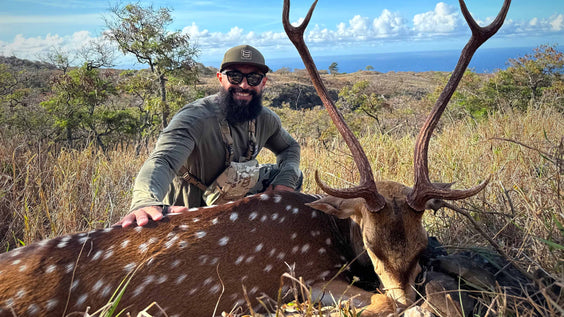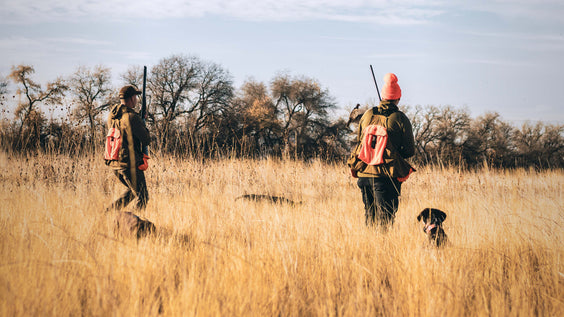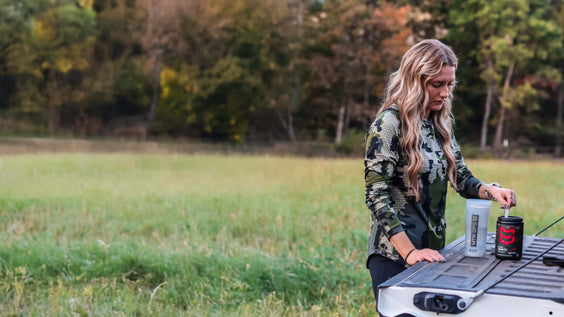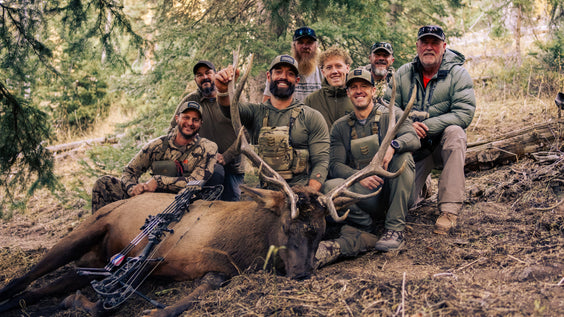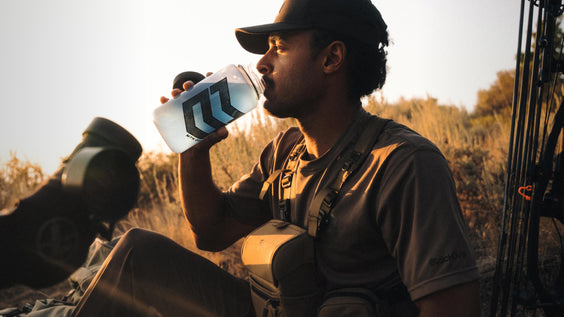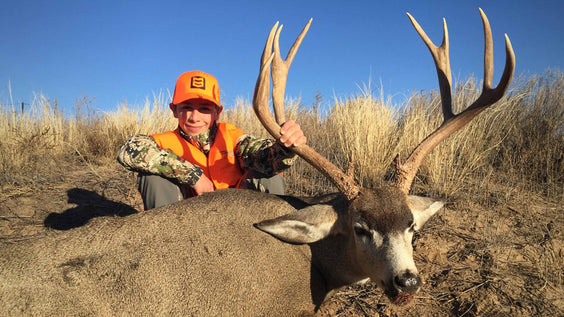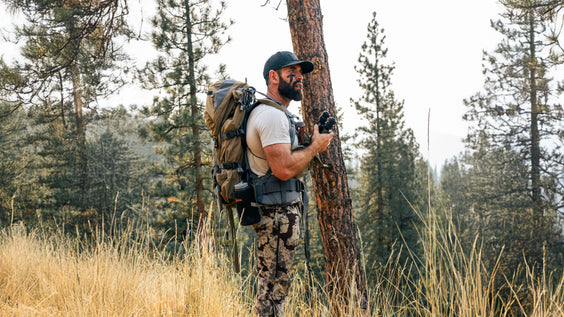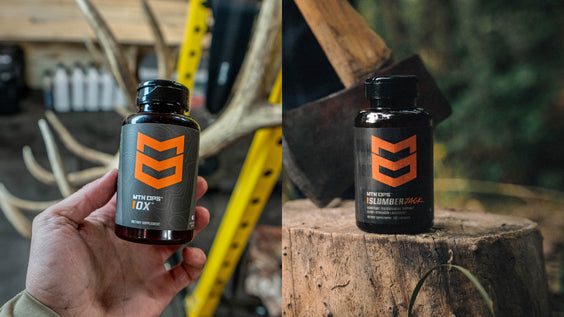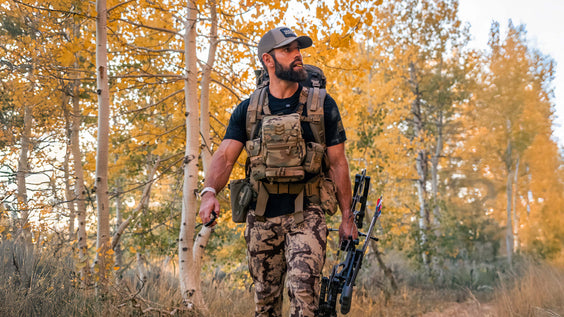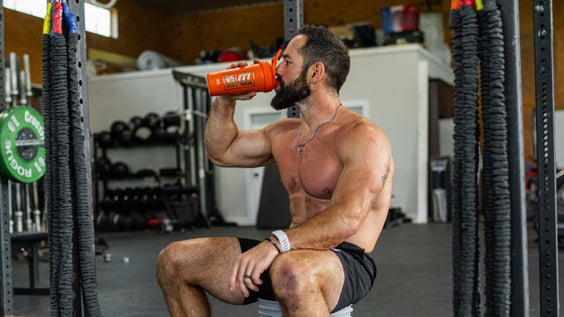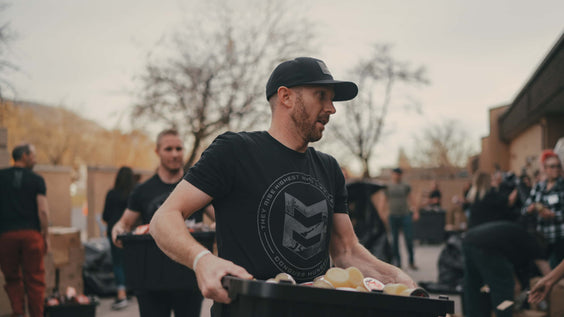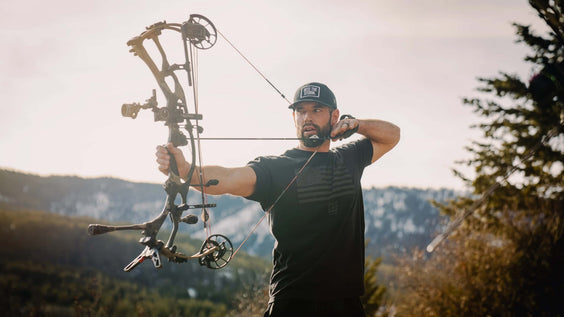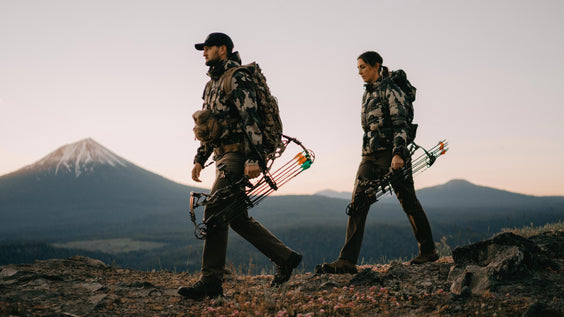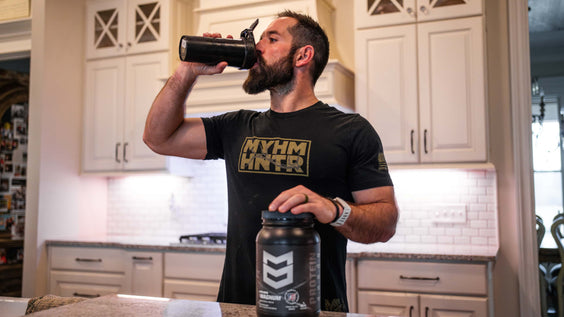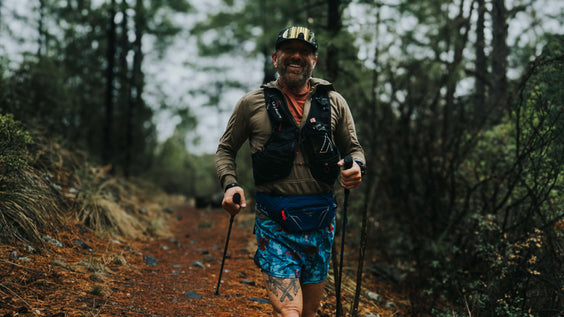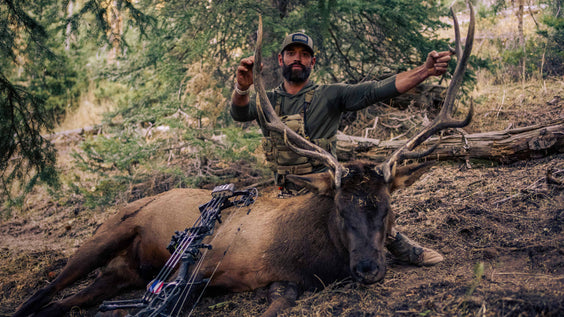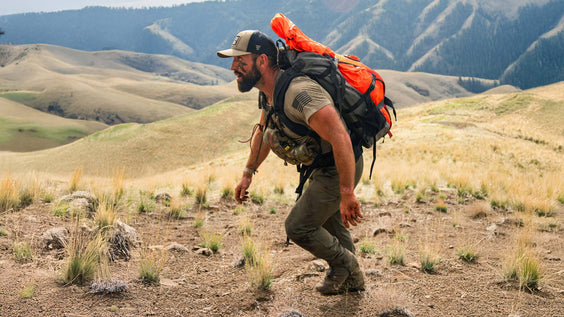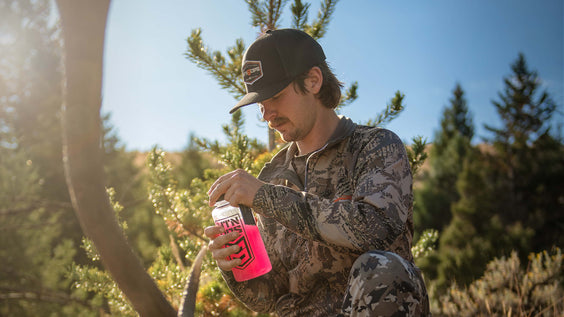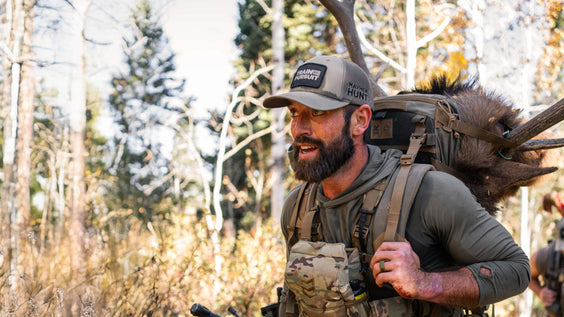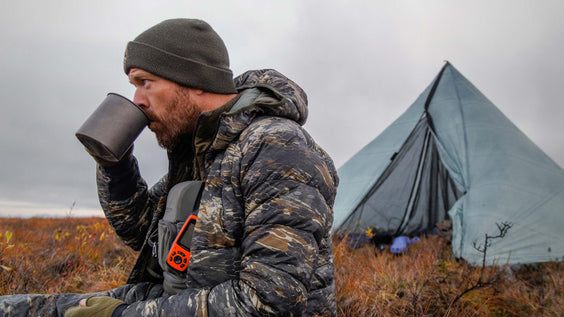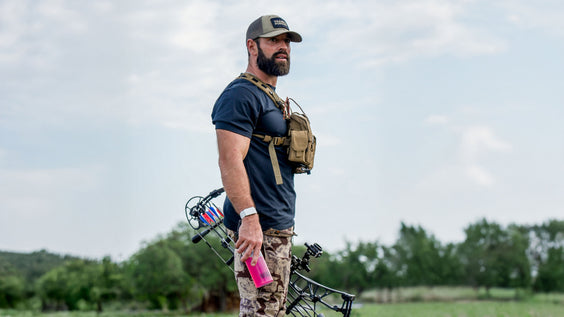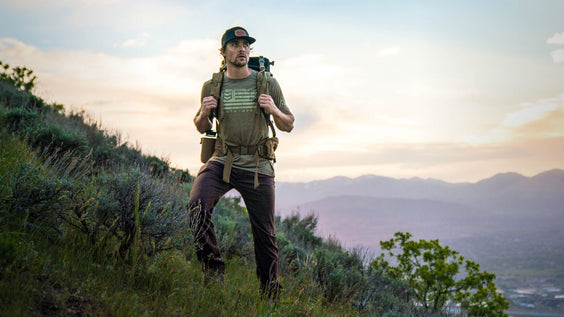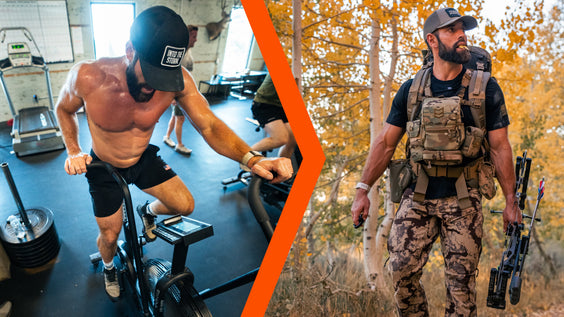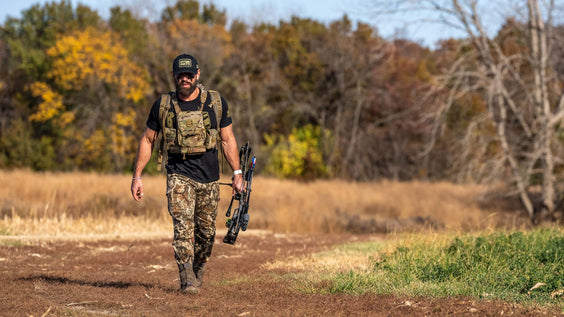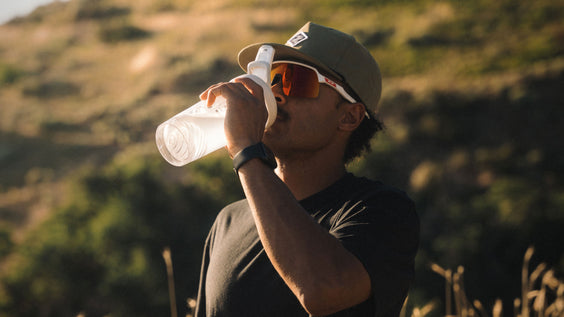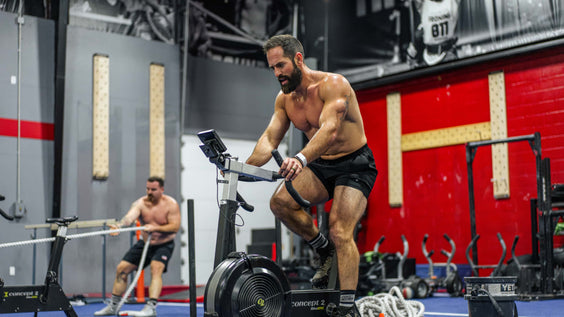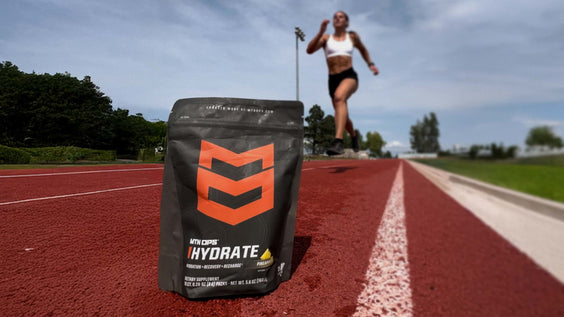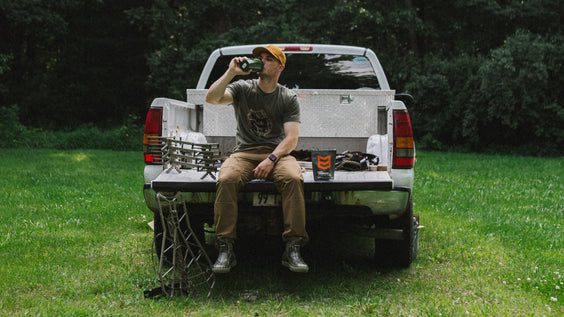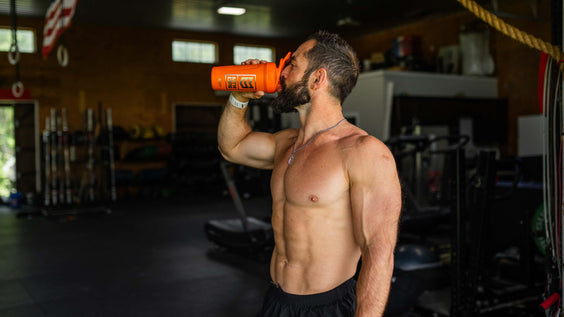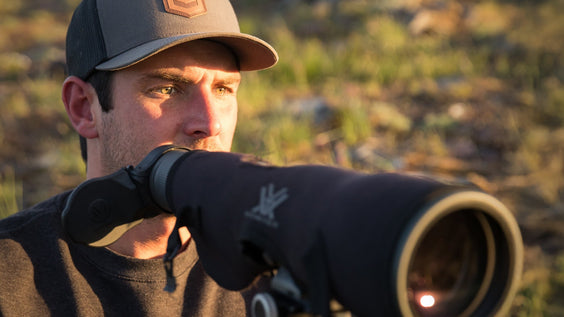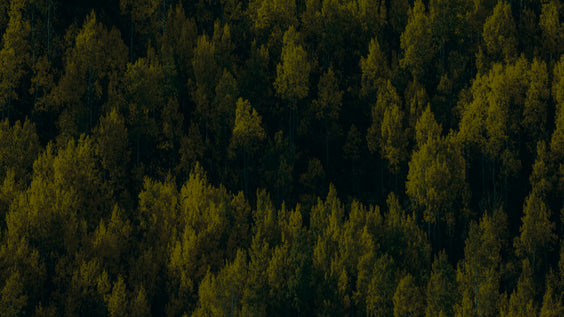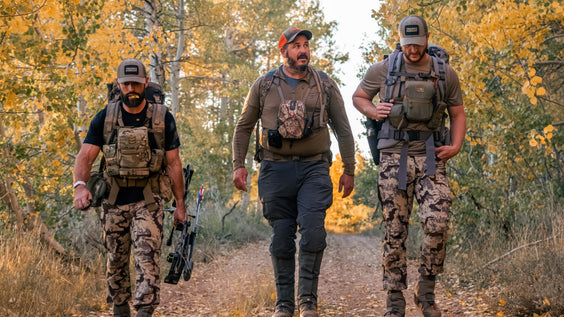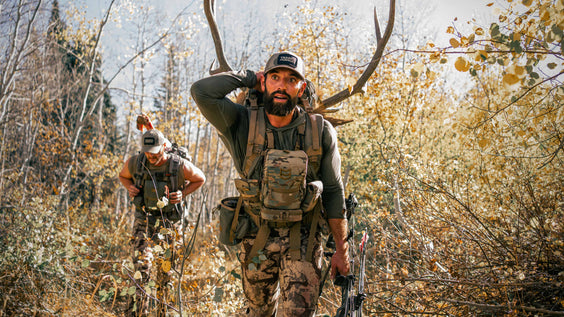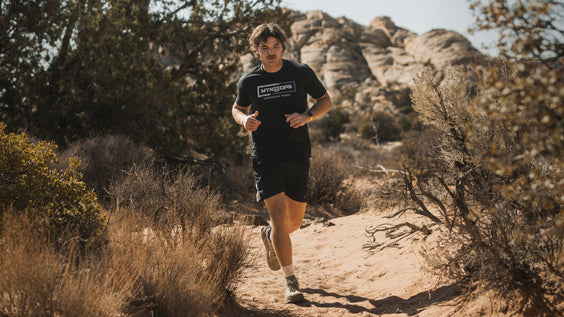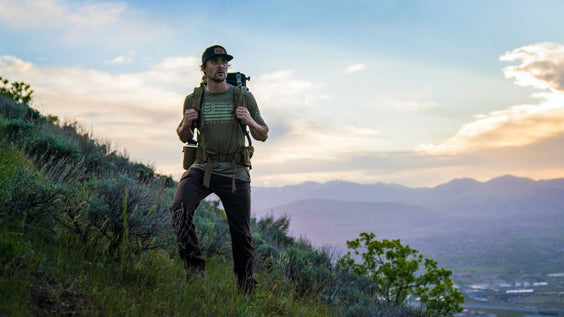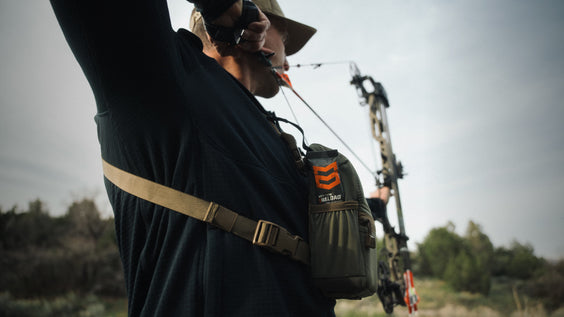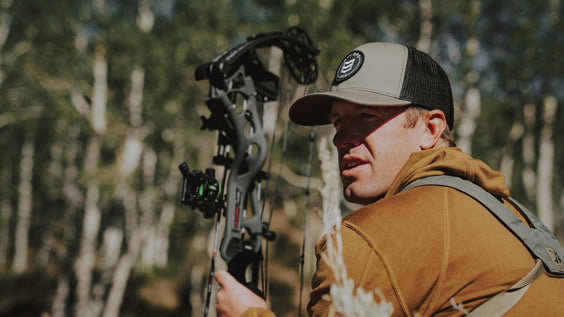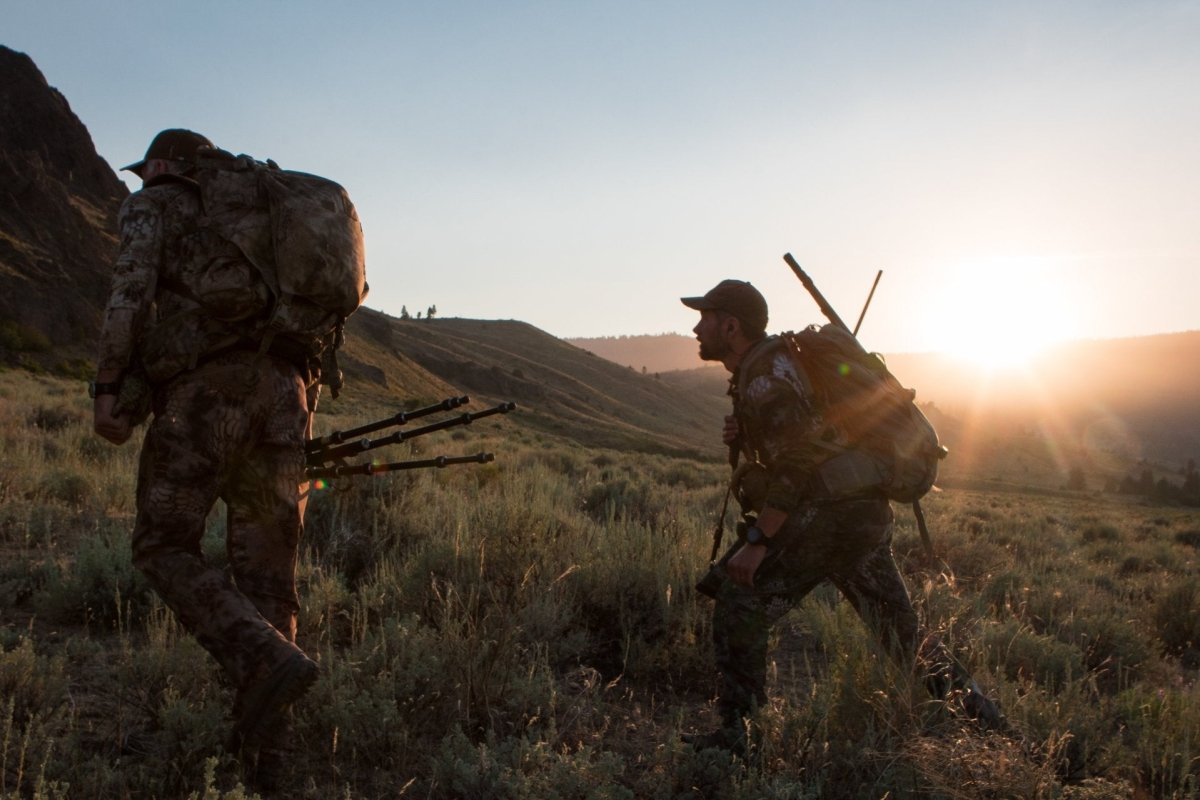
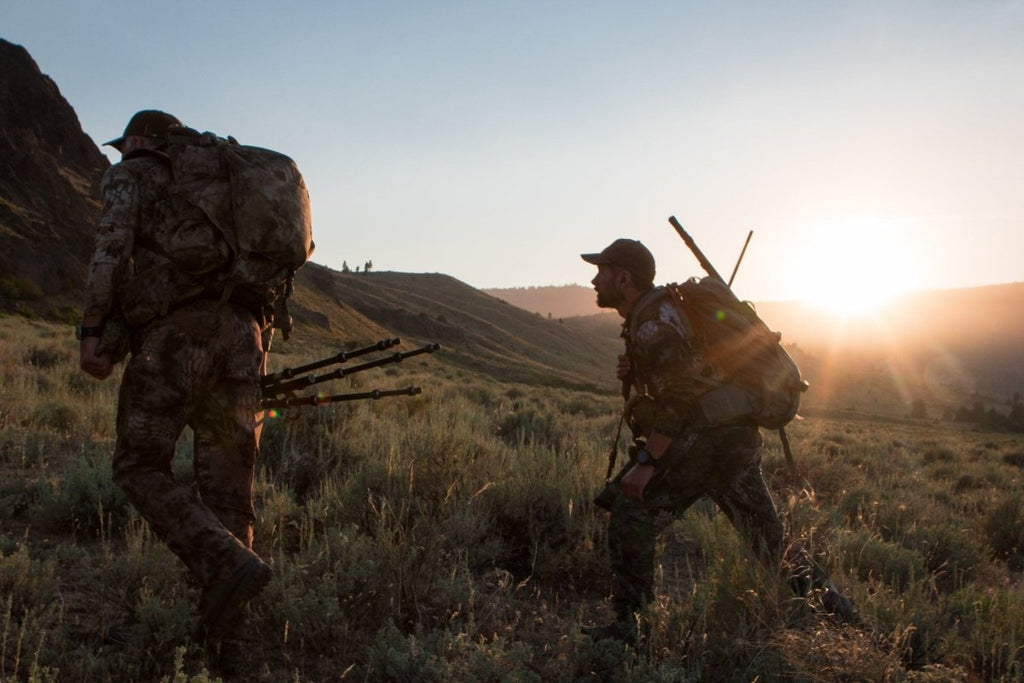
BIGHORN SHEEP WITH ADAM WEATHERBY
May 03, 2018
By MTN OPS
I had just gotten back from Northwest Territories in Canada. It was August of 2015 and I had recently returned from my first sheep hunt and was fortunate enough to tag a beautiful Dall ram in the McKenzie Mountains. It was truly the hunt of a lifetime. As incredible as this sounds, I had one problem… I had sheep fever. I had caught the bug. The adventure, the terrain, the physical challenge and the animals themselves had simply captured me. I found myself on the flight home brainstorming about how I might someday be able to chase one of the three other North American sheep I had yet to hunt. Let’s face it, all I had to do was either shell out a truckload of cash or get really lucky and draw a coveted tag. Neither of these options had me very optimistic and, in reality, I expected it to be many long years before I had a sheep tag in my pocket again. Fast forward to June of 2017. The kids had just gotten out of school and the four of us Weatherby’s loaded up in my 1974 Cessna 206 and made a quick flight up to Oregon where Candy and Randy Yow were putting on their annual Ladies Hunting Camp. My wife and daughter were excited about participating in the camp and proudly showing off our new women’s rifle, the Camilla, which was the sponsor rifle for the weekend. My dad and I ended up taking some time to do some regional business travel while my son hung out with grandma and spent some time adventuring in the Cascades. It was the set up for a pretty fun opening weekend to the summer. However, what I didn’t know was that the weekend had a complete surprise in store that would really change my summer plans. You see, while in Oregon that weekend, the Oregon draw results were released and that is when and where I found out that my second sheep hunt was about to become a reality. I couldn’t believe my eyes when I read the word “successful” on the Oregon Fish and Wildlife website. After all, I believe there are only about 6 non-resident sheep tags drawn annually in the entire state. My tag was for a California Bighorn for the first season in the South Central unit of Oregon. This meant that I had less than 5 weeks before the hunt. The first thing I did was open my calendar and check to see what was planned the latter half of August and to my relief, there was nothing that couldn’t be moved or cancelled. It was official, I was going. Now I just had a month to plan a DIY sheep hunt in an area I had never hunted. That was a challenge I was thrilled to take on. After spending the weekend with the Yows in Oregon, Brenda (my wife) suggested I give Randy a call. Well, that was the best choice I made in my hunt preparation. Before I knew it, Randy and Candy began to help me plan this trip. Their friends and family were out scouting, since the unit was right in their backyard in Oregon. It was tough for me to get out and do a lot of scouting between my schedule and travel time to Southern Oregon. However, Brenda and I made it up there one weekend for a scouting expedition. It was really the chance for me to get the lay of the land. The four of us camped out at a local airstrip I was able to land at. We slept in the Yows trailer and logged some time traveling throughout the mountain ranges in the vast BLM for signs of water and evidence of sheep habitat. Randy had already spoken with local wildlife biologists and we had a pretty good idea where there were some decent sheep populations. We just had to figure out a game plan… Where would we camp? What mountains would we hunt first? Where was the best access? Well, by the end of the weekend, we had things somewhat figured out. We said our goodbyes and knew the next time we would see each other would be opening weekend. Now all I had to do was figure out what rifle I was going to take. It didn’t take much thinking to choose my caliber. My Dall Sheep had been the first animal taken with the 6.5-300 Wby Mag and, after seeing the terrain in the Oregon desert, I knew that the flat shooting trajectory of that cartridge could come in quite handy once again. As far as the rifle itself, I do have a distinct advantage in having a pretty good selection to choose from. I had just finished up a series of conversations with Butch Whiting, CEO of Kryptek, about introducing a brand new Ultra Lightweight rifle with the stock covered in their newest pattern, Kryptek Altitude. This pattern is featured on their new high-end apparel line and is completely designed with the sheep hunter in mind. We matched it up with a Tungsten colored Cerakote on the metalwork and planned to introduce it as the Mark V Altitude. So, I quickly had a sample rifle built for the hunt since the launch date wasn’t going to be until later in the fall. I mounted a Leupold scope with the Thompson Long Range custom reticle on top and zeroed it in for 300 yards. The 127 grain Barnes LRX bullet was punching sub MOA groups out to the 500 yards I tested it at. I had my weapon dialed in and was ready for the hunt. It was two days before season opened and my wife and I loaded up the Yamaha side by side on top of the Jumping Jack trailer and headed north in my Ram pickup. Packing for a trip always takes me forever. In fact, my wife and kids constantly make fun of me for it. I just always want to make sure I have the right gear. After all, on a hunt like this, my gear can make or break the trip. We loaded up a few Yeti coolers, hoping that the drinks and food would be substituted with game bags full of sheep meat on the return trip. My Kennetrek boots were chosen to survive the rocky terrain and give my weak ankle the support it needs. My Spartan carbon fiber bipod/shooting stick system was a no-brainer for the pack list on this trip, as was my Mystery Ranch pack that I envisioned a bighorn strapped to. I really had the assortment of optics on this trip as my Leupold scope was accompanied by my Swarovski range finding binos and Vortex HD spotting scope. It was a great optical combination from the best that Asia, Europe and the U.S. has to offer.

I knew we would be facing long, hot days in the Oregon desert. For this reason, I brought along plenty of Mtn Ops Ignite that ended up daily in my day pack mixed up in my Yeti bottle with ice cold water. A few days into the hunt, we ended up sitting on the side of a mountain for a few hours in the extreme heat waiting for a band of rams to hop out of their bed. Let’s just say that Ignite was my lifesaver that day, especially once we realized it was only a young group of rams we were after and then had to hike out the better part of the afternoon.

As they often say, sheep country is steep country. The ridges and rims we hiked that week were no exception. We would often stay up late studying the topo maps for the next day’s hunt. We would use the Yamaha Viking to get across the BLM to new mountain ranges. Once at the mountain range, it was hiking time. We journeyed across much of South Central Oregon and hit several mountain ranges. We hunted the Diablos, Sheep Rock, the Coglans, the Hadleys, Sharp Mountain and a few I am forgetting. There were plenty of signs of sheep, but most seemed to be either ewes, lambs or younger rams. Our alarms would go off at 4:00am every morning and we wouldn’t get to bed to almost 11:00pm each night. These long days and short nights, combined with minimal ram activity and lots of hiking started to get us a bit worn out, to say the least. Both physically and emotionally, things began to take its toll. To add to the difficulty, the rattlesnakes didn’t make anything easier. All in all, I think we encountered close to 10 snakes throughout the hunt, and I am an absolute wimp when it comes to snakes. The biggest snake story of the trip came one evening when we were headed out to hunt and our dog, Wrangler, came walking up with a head twice the size as he normally has. After quickly realizing a rattlesnake had bit him in the nose, the ladies were off to the nearest vet while the boys went looking for sheep. It was nothing a little anti-venom and a nice vet bill couldn’t fix. Lesson learned… bird dogs like to sniff things and are quite curious creatures and may be best left at home when hunting sheep in snake country.

During the pre-season scouting, some nice rams had been spotted. However, as is often the case, once season opened they were nowhere to be found. All in all, I had four stalks on rams, the first three which I passed on. I knew that I wanted to harvest a mature ram and we just weren’t seeing any that fit my criteria. However, a few days into the hunt, we had seen him… the ram I wanted. We blew a stalk on him that day as he winded us and took off. As it turns out he left for a couple days. During those couple days, we hunted several other areas in search of another nice ram, checking back from time to time to see if that ram had shown back up. It was the end of the fourth day and I was beginning to wonder in my mind if I would have to make a compromise on the ram I wanted. The other 3 hunters in the zone had already tagged their ram. I was the fourth and final of the season and I wasn’t about to give up. Should I hold out for that ram we had stalked or continue to try new areas in hopes of seeing something completely new?

The alarm went off at 4:00am for the fifth morning in a row. We split up into three groups. Randy, myself and Micah (friend and photographer) went to the mountains where the “blown stalk” ram had been. The ladies headed to a different mountain range and Dylan and Austin (Dylan is Randy’s grandson) headed to yet a different mountain range. We hoped to see something that morning as we divided to hopefully conquer. On the drive over that morning, I was exhausted. I dozed off a few times in the truck as Randy drove the bumpy dirt roads. Once there, we got out and headed for the mountains. After looking in all the usual spots for this ram, I had almost determined that the ram wasn’t back. I figured that our blown stalk might have sent them away for good. As I sat back and pondered the situation, Randy set down his spotting scope one more time and blurted out “Bingo.” The group of 4 rams were back and the big one was there. We sent out some messages to the others (Garmin inReach comes in handy at those moments) that we were after him so that they could hopefully find us once we were successful and be around for pictures and high fives. With that, our daypacks were on and we were off on a stalk. Everything seemed to be in our favor that morning. The wind was coming straight at us, the clouds came in to shade things, and the terrain was the best it had been for a stalk. The other few stalks we had done put us between 400 and 550 yards of the rams. This stalk, however, if done successful, would put us within a few hundred yards of them. They were grazing and getting up and down from their beds as we began closing the gap. The stalk wasn’t long but it was steep. I have always heard that the best way to stalk sheep is from above. This wasn’t possible, given the terrain, so this stalk was up at them, with small hills and rocks sheltering our view of them as we drew closer. Without the wind completely in our favor, we wouldn’t have continued. As we approached our targeted position, I was completely out of breath. Most of it was due to the sheer altitude we had climbed and the rest of it was due to the sheep fever I was now feeling. Fortunately we had time. We sat down and regained our breath and began to get things ready. The pack came off, as did the binos. Out came the bipod and in went the cartridge into the chamber. With the safety on and lying in the prone position, we waited. If they kept grazing the way we thought they were headed, they should have come into view any minute. As the minutes went by, the rams were coming slightly in and out of sight. Randy had the spotting scope on them while I looked directly through my crosshairs at them. We were just waiting for the big one to pop out. I had to rest my head and eyes from time to time to keep myself from fatigue. I knew one thing, we had studied this ram over and over and once he revealed himself in a good position, I was going to squeeze that trigger. He was the biggest and most mature ram we had seen since opening day and the decision had been made.

It all happened so fast. That large ram had been walking closer to us and we didn’t know it. He stepped out broadside at 220 yards and I knew it was him. The mass and curl on his horns were different than the other three and now he was closer than ever. With the zoom all the way in to 14 power, it was an obvious choice. In fact, I squeezed that trigger so quick that it alarmed Randy and Micah who were still figuring out what was going on. All that long range preparation wasn’t quite needed as that ram immediately dropped in his tracks and rolled about 20 yards down the hill to his final resting spot.

The next several hours were well spent. The rest of the group showed up and it was quite the celebration on the side of the mountain that day. Photos were taken, the animal was quartered and together we packed down the fruits of our labor that afternoon ending with grilled backstraps back at camp. I don’t think any of us will forget that day. The group effort that was put forth to help fill my tag is one I will never forget. Never before had I been a part of such teamwork all for one tag. Randy, and his friend Neil who was also along, had each put in as Oregon residents for over 40 years in a row for a sheep tag and had never drawn. Although Randy and Neil didn’t pull the trigger that day, I feel that our experience in South Central Oregon is one that none of us will forget. I truly believe that the success was equally shared. This includes my amazing wife who came along for the journey as well. The whole team put in hours of scouting, glassing, hiking and planning for this moment and I can honestly say that the friendships deepened were the highlight of the hunt. I am truly thankful for the conservation efforts that have gone before me to make a hunt like this a possibility. The efforts of those at the Wild Sheep Foundation, along with those at the Oregon Department of Fish and Wildlife were truly evident. Although recent droughts, predation and disease continue to be a threat, the efforts of many conservationists allow for hunts like this to take place and, more importantly, continue to help the Bighorn Sheep population thrive. As I visited after the hunt with local wildlife biologist, John Muir, it was evident to me that the future of sheep hunting was in good hands. People like Mr. Muir, and many others, are closely monitoring these amazing animals to help ensure that folks like Randy and Neil may someday be as lucky as me and log in to their computer and see the word “successful” next to the words “bighorn sheep.”
Story by Adam Weatherby | @adamweatherby







